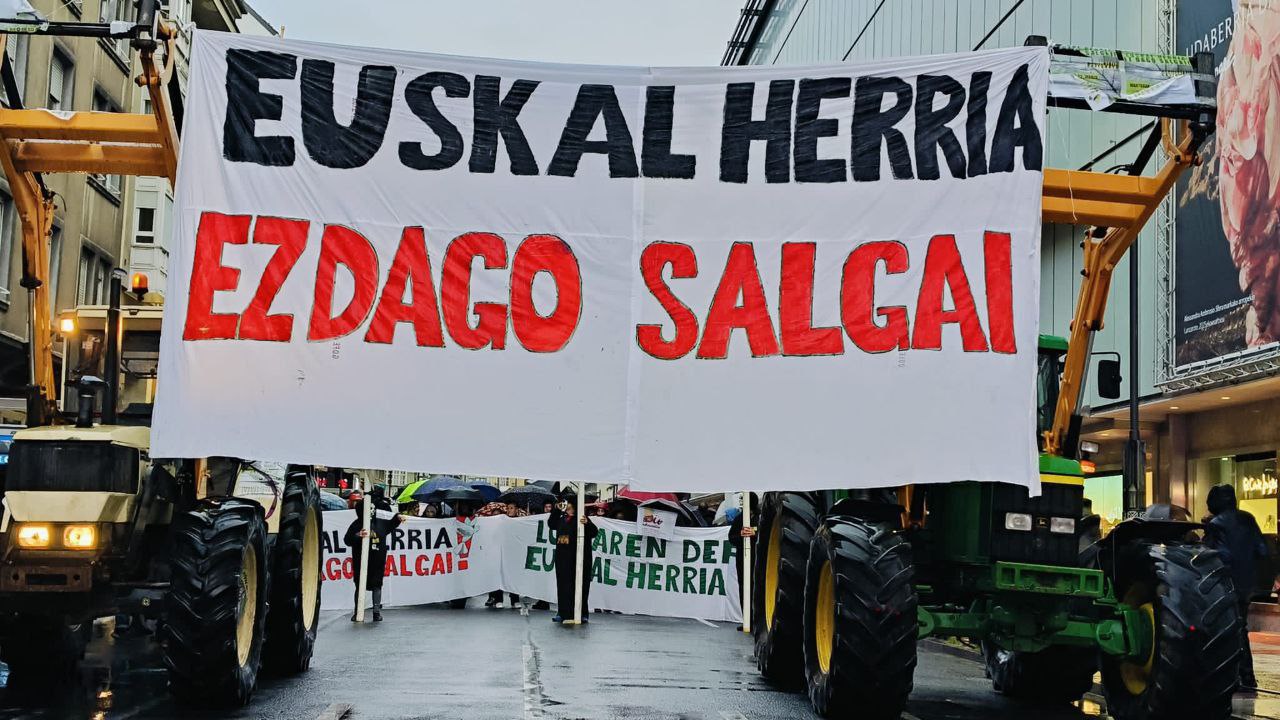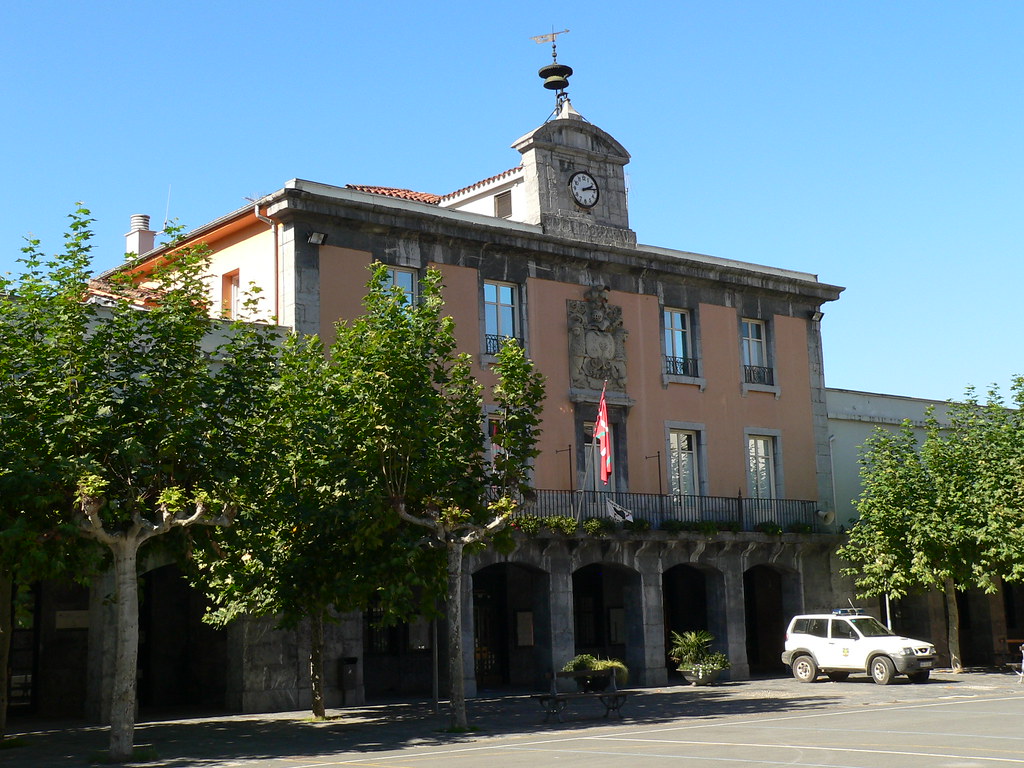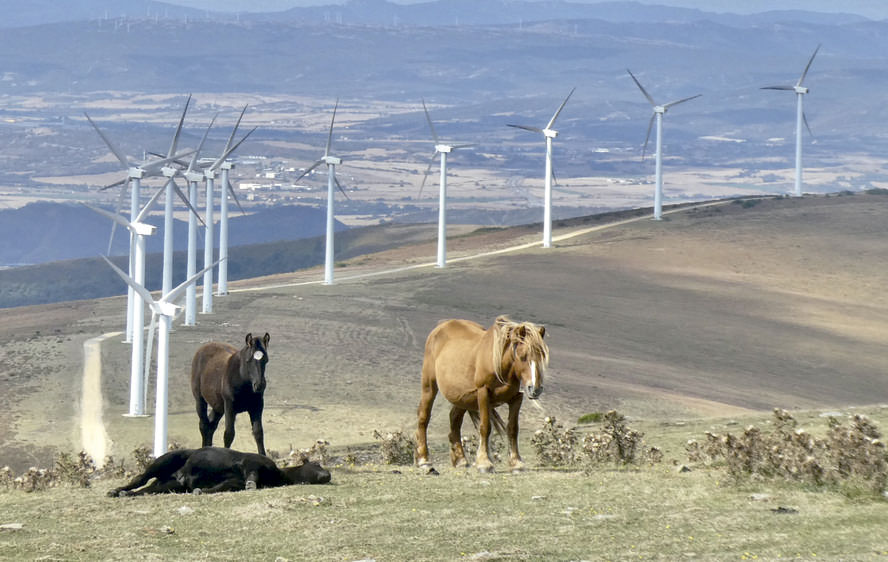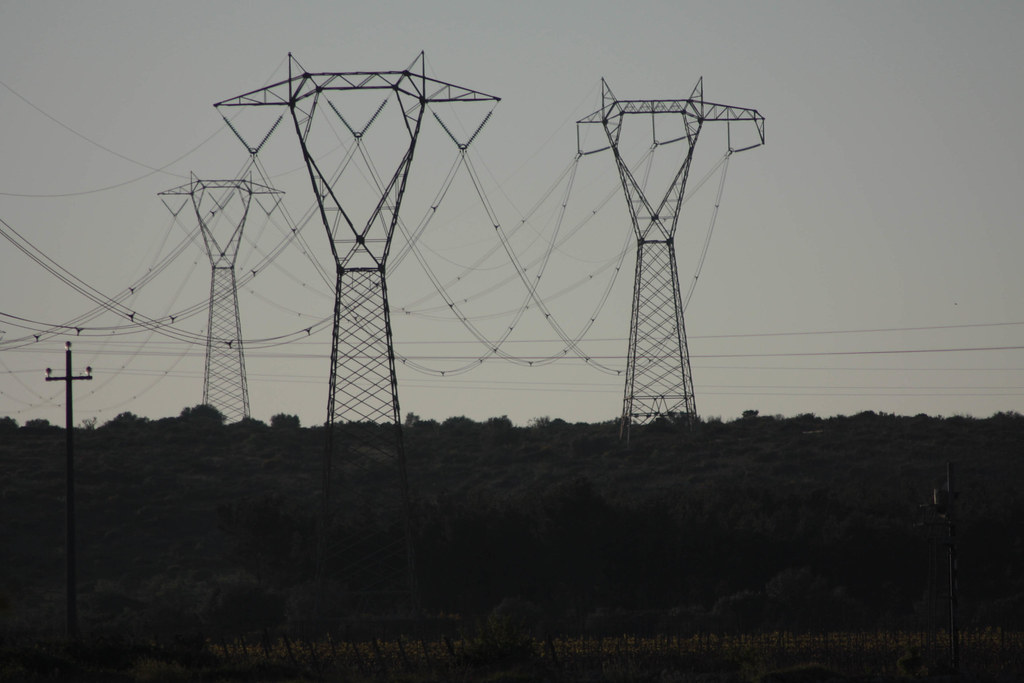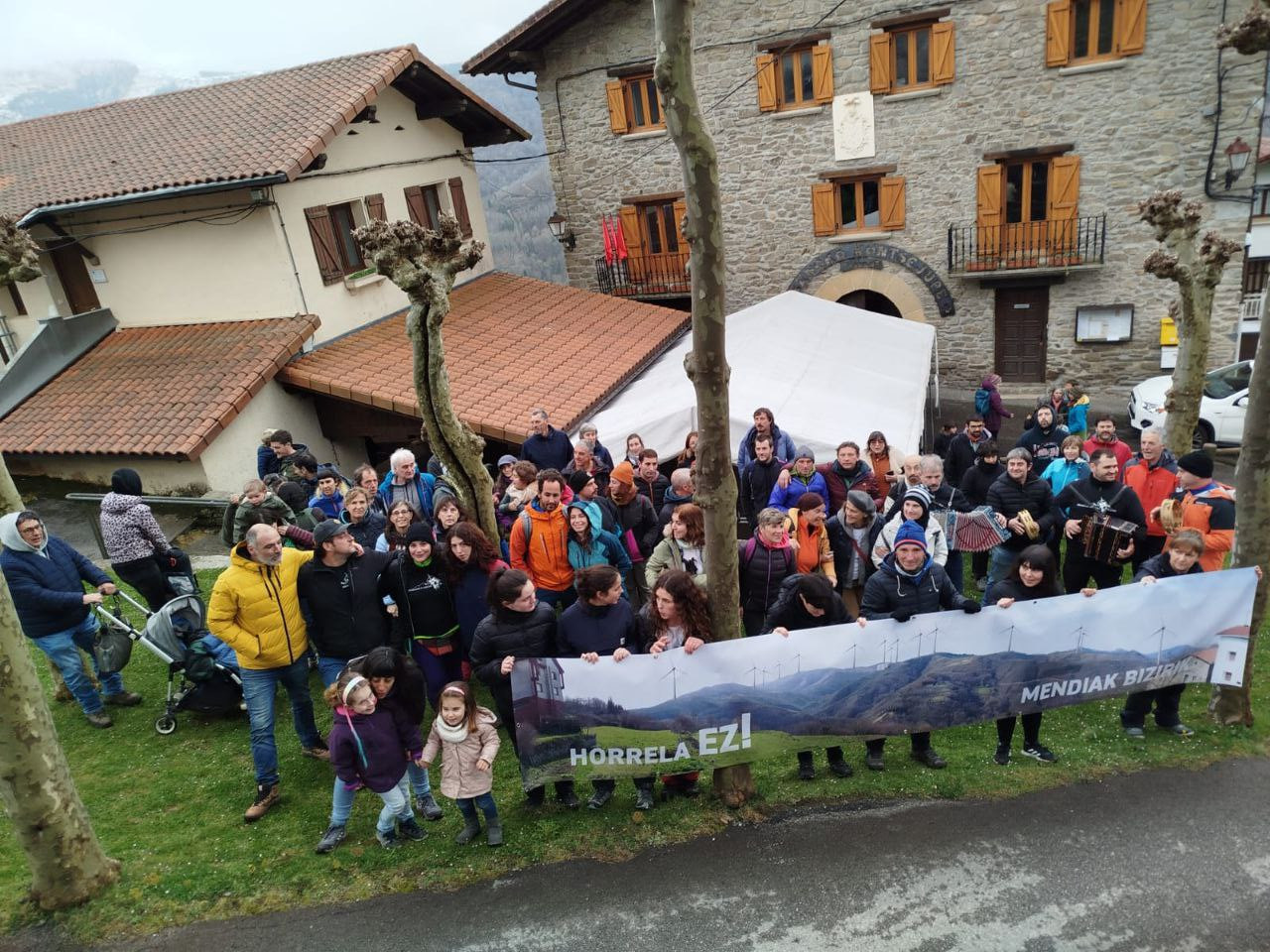Launch the first CAV energy community in Ribera Alta
- The president of the Mendi-Haran Water Consortium of Álava, José María Martioda, is one of the drivers of the process of creating local energy communities in Álava; in Lasierra the community's first energy community has been launched but has also spread to other localities of the territory, such as Gorbeialdea or Treviño.

The "winter regulatory package" for renewable energy, adopted by the European Commission in 2020, finally includes the concept of the Local Energy Community, with the aim of putting "people" at the forefront of the energy system. In the CAV, the first practical application of this figure has taken place in the municipality of Alavés de Lasierra. The Mendi-Haran Water Consortium, which manages the Azala and water spaces, has created the Lasierra Energy Community. The president of the consortium and promoter of the energy communities in Álava, José María Martioda (Vitoria-Gasteiz, 1952), explained that the new figure makes it possible to move from being a consumer to being the largest producer and engine of the energy system.
How many energy communities currently exist in Álava?
The laser is the first to work. The community building process is already underway in Tresbridges and in Urarte a community is also being built and it seems that they want to use the water mill to generate energy. In Pobes they are also starting to move and in Maurgan they have been with the project for a long time. Steps are also being taken in the Saseta area in Treviño and efforts are being made to incorporate some of the towns participating in the Mendi-Haran Consortium.
The "democratization" of energy production is one of the pillars of these communities, right?
That's right. A few years ago, the Mendi-Haran Water Consortium made the transition to renewable energy and we joined an energy consumer cooperative, EMASP. The cooperative buys renewable energy and sells it to us. In addition, it invests the economic benefits it derives from social projects. In fact, at the end of the year, we are asked by each partner where we want to invest the economic benefit that has been gained. Well, in 2019, EMASP-EMASP informed us about these energy communities, which also wanted to promote this figure. When they explained to me what they were, I found it a great opportunity for the Administrative Boards of Álava.
In what sense?
They're lots for 21st-century fire. We in Europe are being told what we have been doing for some time in the peoples here: the right to heat at home is the local energy community, the right to energy. In addition, this gives strength to the administrative assemblies that want to continue to exist, as it gives them new 21st century products to be sovereign.
How is a Local Energy Community specifically organised?
For example, you put the solar panels in your house, the installation is not very expensive, today you can do it for 6,000 euros, and I, who live in an environment of 500 kilometers, put my own panels. Well, we can share the electricity we generate without paying VAT or tolls. How can this be done? If we agree and put a single installation in place, we will save more.
And what role does the Administrative Board play in this?
If we introduce an administration, we will get more subsidies for the installation, and also a fallowing of the Administrative Board for the installation can be used. A concern that arises from the bottom up is the creation of an energy community and seeks the complicity of public administrations, in this case the administrative boards, in order to be able to access subsidies. If you and I create community, the EVE will subsidise us 20% in our house, but with the participation of public administrations we can have more financial support.
Do all the neighbours have to agree to implement the project?
No, it's not necessary. Local energy communities are based on the free attachment of neighbours, but they usually come in, because from an economic point of view it is very attractive, as they can reduce the energy bill by 60%. Furthermore, with a view to the future, the European Commission has asked the states to support such projects in the tax field as well. Therefore, the only thing they have to agree on is whether or not the Administrative Board is integrated into the project, but the energy community is freely composed, conditions are reviewed each year and whoever wants to leave the community or introduce new partners. On the other hand, in the energy community, each accountant has a vote, just like a large company or people, and in that sense its functioning will be fully democratic.
Why did you choose Lasierra to start the first experience?
It is a small town, the chairman of the Administrative Board showed interest. It has served us to try, and we have seen that it has gone very well. In Lasierra the water extraction pump is the one that has the most consumption, there are also houses of the Azala space, consumption of the Administrative Board (public lighting, etc.) and six homes. In total, less than 40,000 euros have been invested in the placement of solar panels. Some 40 solar panels and 40 more have been installed in the tank on an adjacent plot, which have been conditioned as a canopy to allow eight cars to pass at the bottom and use them as car parks. The local electricity grid has been used and meters have been installed to measure the energy generated by the panels in the area. The surplus will be managed through the EMASP cooperative.
How has the Mendi-Haran Water Consortium been involved in the project?
Participates as a user in the Lasierra Energy Community. We had to make a small investment to get the project going, but we're going to get it back.
Has the procedure been lengthy?
Last year we started talking about the project, the first council was held in March and in April we started asking for budgets. According to the project, the processing is different; in Lasierra they have not had to make a large project, and in addition, as a member of the consortium, they have taken from the cooperative the legal and technical advice they needed. From now on, whoever wants to have our support, we are going to all places in the last few months to explain the issue of local energy communities, evangelize, hahaha.
The Lasierra project has been awarded in the Basque Government project 'The Furnace of Social Innovation in the Rural Environment'.
Yes. As a result, a user guide is being prepared for the creation of such communities, to know what they should do if they are interested in any country.
What changes will neighbours have to make to energy consumption?
They have to move their backs to consume as much energy as possible in the hours of the sun and to make the surplus as small as possible; these kilowatts will be paid by the cooperative, but they have taxes. It is practically impossible to do it one hundred per cent, but everyone can optimize their consumption, for example, instead of watering at night in the morning, putting the washing machine at night at noon ...
The Council of Álava has just presented the Ekiola project. Does it relate to local energy communities?
Ekiola is another project. It's not about local energy communities. As far as I am aware, Brussels has defined very well what a local Energy Community is and above all they talk about the micro-generation of energy, and that is what they are supporting: projects with an infrastructure of up to 100 kilowatts and a return limit of 500 metres. For the Lasierra they've been 40 kilowatts, and in many of the villages here, that's the energy they need. Ekiola, for its part, wants to bring together the municipalities to raise funds and talk about solar parks with a power between one megawatt and five megawatts, which means an investment of 55,000 euros. That's not a local energy community.
Don't you like the project?
I don't know. It's another project. In Álava, Ekiola doesn't make much sense, it may have it elsewhere, in Gipuzkoa, where the project emerged, where there are many small and medium-sized enterprises where there is more sense. We stayed with a hundred kilowatts, we played the third division, among friends, while they played the first division, the black face, in the neoliberal market. Ekiola has emphasized the importance of being great. We, however, consider the speed and effectiveness of being small to be important. This year it is urgent to make renewables and many want to do business with renewables.
The Local Energy Community is not a conventional energy supply.
The local energy community is not a commercial supply of electric power, the energy community is something that is generated socially, like wood beams. We believe that energy is a fundamental human right; a house cannot be deprived of electricity, and here we can create it in the most efficient way. Here we create and here we spend. There is no transport, there is a lot of energy spent on transport. These megamomills, for example, are not effective. Are they renewable? It's possible, but they're not effective because they lose a lot of energy in transport. The energy community is a very efficient project. Socially, because it has been placed in the most appropriate place and, in addition, the administrative board has ceded the ground. It is also socially effective, because it is talked about and debated democratically.
Will you need the help of the Member?
Of course. When it comes to carrying out many procedures and obtaining subsidies, the Council of Álava will have to support us and help us; it has to make the way easier.
Energiaren Nazioarteko Agentziak (IEA) astelehenean argitaratutako txostenaren arabera, %2,2 igo da energia eskaria 2024an aurreko urtearekin alderatuta, besteak beste, egiturazko arrazoi hauengatik: beroari aurre egiteko argindar gehiago erabili beharra, industriaren kontsumoa... [+]
Arratzua-Ubarrundiako "Proiektu honi ez!" plataformak adierazpen hau kaleratu du, udalerri horretako EH Bilduko hiru zinegotziek dimisioa aurkeztu berritan. Izenburu hau darama testuak: "EH Bilduren moketako politika edo Iparra nola galdu".
Arratzua-Ubarrundia (Araba) herriko EH Bilduko hiru zinegotziek dimisioa eman dute Solariaren zentral fotovoltaikoagatik. Hau da hiru zinegotziek, Txetxu Zengotitabengoak, Laura Sanchok eta Javier Ruiz de Arkautek, herritarrei zuzendu dieten agur mezua.
Eusko Jaurlaritzak eta Arabako Foru Aldundiak Datu Zentroen instalazioei ateak irekitzen dizkiete horiek arautzeko legedia sortu aurretik. Bilbao-Arasur Dantu Zentroarekin, bere lehen fasea gauzatuta, eta instalatzea amesten duen Solariaren Datu Zentroarekin, 110.000 m2... [+]
Otero jauna, garai honetan artzain honek ez du tarte handirik izaten ezertarako, justuan ibiltzen naiz, baina gaurkoan ezin utzi erantzun gabe zure azken kolaborazioa. Izan ere, sortu didan egonezinak pisua du. Haserrea ere astuna egiten zait. Ez pentsatu, ordea, dela zenbait... [+]
Martxoak 15 goizean elurrak zuritu zuen Arano. Bertako herritarrek eta ingurutik eta ez hain ingurutik bildutakoek bete zuten plaza eta elkartasunaren beroan gozatu zuten eguna: Urumeako mendietan ezarri nahi duten Euskal Herriko zentral eoliko handienaren kontrako protesta izan... [+]
Susmoa dut komunitatea hustuketa prozesu betean dagoela, eta beldur naiz, beste askori gertatu eran, mamirik gabeko bilgarri ez ote den bilakatuko, jada bilakatu ez bada. Ikustea besterik ez dago, komunitatearen izaera holistikoa gero eta modu lausoagoan heltzen da, eta Che... [+]
Herriko EH Bilduko zinegotzi eta legebiltzarkide den Ander Goikoetxeak egindako galdera parlamentario bati Jaurlaritzak emandako erantzunaren bidez jaso informazioa hau. Bi haize sorgailu ezartzeko asmoa dago eta Cluster Hernani izeneko proiektu zabalago baten barruan kokatzen... [+]









